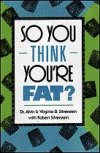Eating Troubles Additional Information
Share this:
- Share via email (Opens in new window) Email
- Click to share on Facebook (Opens in new window) Facebook
- Click to share on X (Opens in new window) X
- Click to share on Pinterest (Opens in new window) Pinterest
- Click to share on Reddit (Opens in new window) Reddit
- Share to Google Classroom (Opens in new window) Google Classroom
- Click to print (Opens in new window) Print
Information for kids about eating disorders is available at kidshealth.org/kid/health_problems/learning_problem/eatdisorder.html (KidsHealth for Kids).
For additional information about eating disorders, go to familydoctor.org/277.xml (American Academy of Family Physicians), www.nationaleatingdisorders.org/ (National Eating Disorders Association), and www.aedweb.org/(Academy for Eating Disorders).
For an article about genetics and eating disorders, see www.apa.org/monitor/mar02/furthergene.html (American Psychological Association).
To learn about eating disorders in Fiji, go to www.hms.harvard.edu/news/releases/599bodyimage.html (Harvard University).
Sohn, Emily. 2005. Food for life. Science News for Kids (April 20). Available at http://www.sciencenewsforkids.org/articles/20050420/Feature1.asp.
______. 2004. Packing fat. Science News for Kids (Oct. 27). Available at http://www.sciencenewsforkids.org/articles/20041027/Feature1.asp.
______. 2004. Worlds of self-esteem. Science News for Kids (Sept. 1). Available at http://www.sciencenewsforkids.org/articles/20040901/Feature1.asp.
______. 2003. Turning to sweets, fats to calm the brain. Science News for Kids (Sept. 17).
Available at http://www.sciencenewsforkids.org/articles/20030917/Note2.asp.
For Teachers:
Planet Health is an interdisciplinary curriculum focused on improving the health and well-being of middle school students while building and reinforcing skills in language arts, math, science, social studies, and physical education. See www.hsph.harvard.edu/prc/proj_planet.html (Harvard University).
Books recommended by SearchIt!Science:
 |
Eating Disorders—Kathlyn Gay
Published by Enslow Publishers, 2003.
“No matter how I tried, I couldn’t get thin, and it was the central problem of my life,” wrote one person with an eating disorder. People with eating disorders usually think that they are too fat. They believe that if they had a “perfect” body, their life would be better. This book explains the causes and symptoms of eating disorders, including anorexia, bulimia, and binge eating. Learn about the history of anorexia and bulimia, how these disorders are detected and diagnosed, and what their health consequences are. The book also features chapters on the treatment of eating disorders, awareness and prevention programs, and current and future research. |
 |
Body Image: A Reality Check—Pamela Shires Sneddon
Published by Enslow Publishers, 1999.
When you look in the mirror, how do you feel about what you see? Do you want to change your body? What did people of your mother’s generation think of themselves? Body Image looks at the history of self-perception. It also presents information on the dangers of eating disorders as well as on dieting, piercing, and other body-altering decisions. Rather than changing your body, the author suggests ways to accept your own self. |
 |
So You Think You’re Fat?—Virginia Silverstein
Published by HarperCollins, 1991.
When you see models or actors on television, in the movies, and in magazines, you may think you are fat. But are you really overweight? And if you are, what are some healthy ways that you can go about getting into shape? This book looks at why people get fat and how they can change their eating habits and exercise routine to become more physically fit. It also considers the way our culture stresses thinness and discusses such eating disorders as anorexia and bulimia. |
Power Words
anorexia nervosa A disorder characterized by an abnormal fear of becoming obese and by persistent efforts to lose weight, leading to severe weight loss and malnourishment. It most commonly affects young women, who often stop menstruating, develop brittle bones, and experience other physical changes as well.
bulimia An eating disorder in which episodes of binge eating are followed by fasting, self-induced vomiting, or other measure to prevent weight gain. It is most common among young women of normal or nearly normal weight.
hormone A chemical compound that is produced in a gland and then carried to another part of the body by the blood. Hormones control many important body activities, such as growth. Hormones act by causing and adjusting chemical reactions in the body.
Hormones are chemical compounds that help keep our bodies working properly. These chemicals are mostly released by glands, and they control how fast our cells digest and make proteins, how much blood is in our blood vessels, and how much pressure our blood has. How fast we grow, how sleepy we are, how hungry we are—hormones play a role in all these things.
puberty The stage in the life cycle of humans and other primates in which they become able to reproduce. The start of menstruation in females, and the ability to produce sperm in males, happen during puberty. Hormones that are produced during puberty cause physical changes in the body, such as growth of facial hair in male humans.
 |
Copyright © 2002, 2003 Houghton-Mifflin Company. All rights reserved. Used with permission.